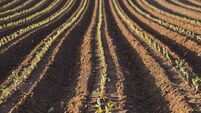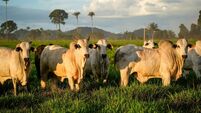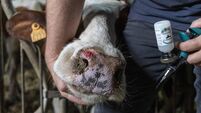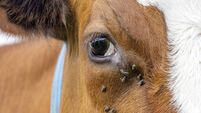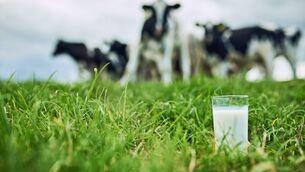How to deal with slurry and fertiliser safely on your farm

Entry into slurry tanks should only be done by a specialist contractor. Never enter a slurry tank unless absolutely essential
Slurry presents two particular safety and health problems, drowning and gas poisoning. Drowning is by far the most common cause of death involving slurry.
Gases such as hydrogen sulphide (HS), carbon dioxide (CO), ammonia (NH) and methane (CH) are produced by bacteria during the decomposition of slurry. Hydrogen sulphide gas is poisonous to humans and animals. Hydrogen sulphide is fatal in seconds, one breath will kill. Smell is no indicator of the absence of gas as many are odourless. Hydrogen sulphide smells like rotten eggs at low levels but cannot be smelt at higher levels as it quickly kills the sense of smell.
Gas release is greatest when the crust is broken and for the first 30 minutes of agitation. Gas release is also greater when silage effluent has been added and when slurry is stored for several months.
Ventilate the shed by opening all doors and outlets and choosing a windy day. Evacuate all persons, animals and control access to the shed. Do not allow slurry to rise to within 300 mm of the bottom of the slats. Agitate from an upwind position for a minimum of 30 minutes. Do not stand or stoop near agitation points and do not enter the building for one hour after agitation. Avoid smoking and naked flames. Make sure PTO covers are in place on all machinery.
Adults, children or farm pets can fall into unprotected slurry tank manhole openings. Adequate temporary protection of openings should always be provided. Use warning signs and warn elderly persons, children and visitors about open slurry tank manhole openings.
Slurry lagoons must be protected by an unclimbable fence or wall. Access points must be secured and locked, scrape holes must be adequately protected and prevent access by children who are at particular risk.
Entry into slurry tanks should only be done by a specialist contractor. Never enter a slurry tank unless absolutely essential and then only follow special arrangements. If you are entering the tank you must wear a safety harness connected to a lifeline held by two people and use a fresh breathing apparatus. Toxic gases can remain in the tank long after it is empty and could cause suffocation or death.
- Large bags
When lifting big bags of fertiliser always beware of overhead electrical cables. Before lifting, check the lifting loops are not worn or cut. The forks or lifting hooks should have well-rounded edges. Sharp edges can damage the bag fibre, causing it to drop. Bags should not be pulled along the ground.
The load must not be allowed to slide along the tines (forks) of the lifting equipment. No one should stand beneath or close to the load when it is being lifted, moved or emptied. The lift should be smooth and vertical.
Once the bag is lifted, complete the task and do not leave the bag hanging in the air. Be careful when cutting the bag, use a long-handled knife. If a big bag has been damaged in a stack, under no circumstances should you approach the bag until a suitable risk assessment has been undertaken.
It has been known for the bag above a damaged bag to become unstable and fall causing fatal injury. The stack shall be dismantled by forklift and the damaged bag removed mechanically for disposal taking into consideration the weakness in the packaging material.
- Small bags
Do not lift or handle excess weight. Heavy lifting and handling can cause injury. Set up the fertiliser on a trailer which is at waist height, if possible. This prevents lifting from ground level and reduces the strain caused.
If lifting a bag, stand the bag upright, adopt a shoulder-wide ‘‘boxer’’ stance with your feet firmly on the ground. Bend your knees and keep your head up and back straight, while lifting with your thigh muscles. It is vital to keep the bag close to your body and grip it firmly.
Point in the direction of the fertiliser spreader and never twist your spine by having your back to the spreader. Ideally, training should be undertaken and alternatives should be considered to minimise lifting strain.
- Spreading on sloping ground
Fertiliser-spreading on sloping ground needs particular attention due to the risk of tractor overturn. Driver competence and experience is crucial for this task. Make sure that you are familiar with the slope by walking it before driving it.
Slopes that are very wet or dry ground on which rain has fallen are particularly dangerous. Drive up and down a slope, not across. Make sure that the tractor is in good mechanical condition, and preferably use a four-wheel-drive tractor.
Select the right gear before approaching the slope. Avoid gear changes on slopes. Keep as much weight uphill as possible and use front-end weights. Use wide turning circles and turn uphill if driving across a slope for access.
- Protect eyes and skin
Protecting your body when handling a chemical product is always recommended. Avoid direct contact with skin and eyes. When handling fertiliser, gloves should be worn at all times. It is very corrosive and will be very painful if you happen to have a cut or a nick on your hand.
Dust can also be an issue and if the spreader is being loaded in an enclosed area, it is advisable to wear a dust mask.
